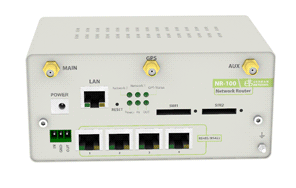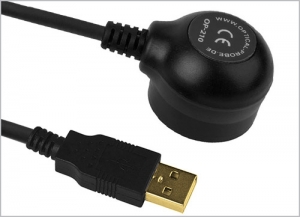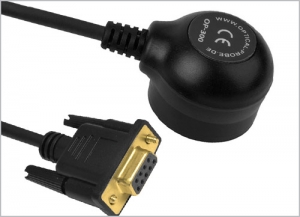Meter Reading Methods
Previously, readings of water, electricity, and gas meters were done manually and noted in paper checklists. Gradually, with the development of the metering industry all over the world, methods for reading the meters also started showing significant progress.
Nowadays, with the production of digital and smart meters, the methods of reading are generally divided into two major methods.
- Manual Reading: This is the traditional method of meter reading, which today, with reading devices, is more accurate and efficient.
- Remote reading: This is a concept where meters are read without the use of human power, using methods such as RF-mesh and GPRS.
Manual Reading
Manual reading is normally performed by “meter readers.” They usually read the meter counter at the subscriber site and record it according to the subscription number they obtain from the distribution company. This is highly prone to human error. Below we review several methods:
- Handwritten Reading: Traditionally, a meter reader records the meter index manually. This method has a higher chance of human error:
- Analog Dial Meters: These are meters that have several dials, each representing a digit. You read the numbers from left to right, noting the position of each dial.
- Digital Meters: These show the reading directly on a screen. You simply note the numbers displayed, ignoring any decimals or extra digits.
- Optical Probe: An optical probe is placed on the meter’s optical port, and the reading is taken automatically. This is faster and eliminates human error. In this approach, not only is the meter counter number automatically read according to the settings made, but many other factors are also taken into consideration.
Normally, the functionality of meter reading devices is restricted to the hardware functionality provided by the manufacturer. Today, manufacturers, thanks to the popularization of smartphones and tablets, have begun to produce reading software under operating systems like Android and Windows Mobile. Advantages of the use of the system are platform independence and the openness of the manufacturer to take advantage of the many features that these platforms give to the user. It is also easier to use these systems compared to earlier systems.
Remote Reading
Manual meter reading poses lots of problems and risks for the meter readers: absence or lack of cooperation for opening building doors, nonstandard installations, and difficult access to meters, etc. Also, the risks include bites, stings by pets, electrocution, etc. Hence, another method for subscriber meter reading had been invented that the meters are fitted with a radio module. These methods have evolved to improve accuracy, efficiency, and convenience in monitoring energy consumption. Below we review several methods:
- RF Module: Meters equipped with a radio frequency module (RF) can transmit the readings wirelessly to a central system. This does not require the presence of a person.
- GPRS Modems: These allow for remote reading of meters via mobile networks, providing real-time data without manual intervention.
You can read the Remote Reading System article for more information.
RF Module
Here, the meter reader simply passes the front door of the house or near the meters on foot or by car and sets the reading device to receive information. In so doing, information is transmitted automatically and wirelessly without necessarily gaining entrance into the house.
Although it provides easy reading and consumes less time while reading, this method has some drawbacks too. The main disadvantage of the system is high energy consumption since the RF transmitter installed next to the meter continuously transmits the data in short intervals and the meter reader visits only once a month to read. Furthermore, when high subscriber densities occur, it takes time for the information to reach the meter reader and it slows down the reading process.
The problems of meter reading are to be solved with a remote reading system using data collection units, DCU. Local transmission in the transmission area is done via RF network to the device DCU and, after data collection, it is transmitted to the data center via LAN or GPRS.
You can read the Advanced Metering Infrastructure (AMI) article for more information.

GPRS Modems
In this approach, the meter reader does not tamper with the reading and hence human error is completely eliminated. In this approach, the meter reader visits the site only to test the meter, inspect the recorded items, find out tampering and undertake repair.
The disturbances and weakness in the radio frequency band gave way to the data collection method of direct remote reading. In this method, each meter has a transmitter module inside or next to it, responsible for event logging and reading meter values and their adjustment directly with the central server via the GPRS network. In this, either smart meters need to be replaced with the meters or remote reading modems must be installed next to the existing meters.
German Metering has the Solution!
One of the German Metering’s optical probes, The OP-740 has a Bluetooth connection interface, which is suitable for tablets and mobile phones and all android devices with Bluetooth connection availability. It also includes an Android library file for programmers and developers. By implementing this library file in the meter reading application, programmers will be able to easily establish a connection between the Bluetooth optical probe and their application. OP-740 benefits from a very strong magnet that firmly attaches the optical probe to the meter and is also resistant to external light influences other than the infrared wavelength.
Using Optical Probes to Read Meters
Optical Probe is an interface that communicates via infrared waves with a peripheral device such as an electricity meter, water meter, heat meter, gas meter or any other device that has an optical port on it. All devices that support the European standard IEC62056-21 (IEC 1107) Mode E & C and IEC62056-31 will work with it. In addition, it has the ability to send settings for data transmission with all types of IEC meters in transparent mode.
If you need more information to find out how optical probes work, click here to find out!
Meter Reader Android Application
Metis is an android application capable of collecting data from various meter models and types and is used by meter readers or field operators to collect and configure target energy meters in the power grid network.
Metis utilizes android system and brings user friendly environment with powerful core features, enabling meter readers to collect and configure meters fast and efficient. Metis also supports digital data collection other than manual data entry for customers and meters. Being able to communicate with both wired and wireless optical probes, Metis can collect data from meter automatically thus eliminating human error and adding many capabilities like meter configurations to the business.
GPRS Modem
Industrial Telecommunication Modem NR-100 is a device that uses LAN and GPRS (mobile data communication platforms (2G / 3G / 4G)) to read and remotely configure all equipment that has RS232 and RS485 communication ports through provides relevant software. This device can be used in facilities such as power transmission centers, substations and any other station to facilitate data transmission. Its installation is in the form of indoor and in different directions.
Meter Data Management Software
Modam is a Modular Platform capable of meter data analysis and collection and offers new possibilities for the utility sector with solutions for energy suppliers, grid operators, metering companies, energy service providers to offer innovative and attractive services. Modam platform provides useful and practical results and insights, helping all utility sector companies do better performance growing and optimizing the grid network. Benefiting from a very powerful engine, Modam provides a Fast, Reliable and Stable collection for utility companies that demand accurate and on-time data. Modam manages all customer information and legal processes in utility companies and can calculate and issue bills for customers consumption. Benefiting from powerful workflow engine, Modam enables utility companies to have all their work routines all in one place, optimizing work performance and reduces multiple systems maintenance costs for utility companies. Modam provides user-friendly and practical tools to utility managers enabling efficient management of energy grid.






